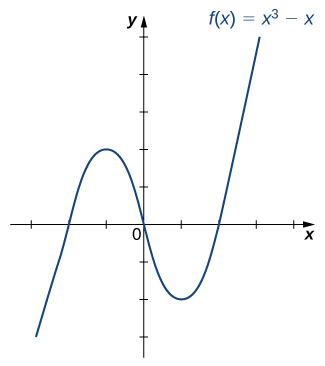- Identify conditions for a function’s inverse using the horizontal line test
- Find the inverse of a function and graph its reflection
- Evaluate inverse trigonometric functions
Inverse Functions
The Main Idea
- Definition of Inverse Functions:
- An inverse function “undoes” what the original function does
- Notation: [latex]f^{-1}[/latex] is the inverse of [latex]f[/latex]
- [latex]f^{-1}(f(x)) = x[/latex] and [latex]f(f^{-1}(x)) = x[/latex]
- Domain and Range Relationship:
- Domain of [latex]f[/latex] becomes the range of [latex]f^{-1}[/latex]
- Range of [latex]f[/latex] becomes the domain of [latex]f^{-1}[/latex]
- One-to-One Functions:
- Each element in the codomain is paired with at most one element in the domain
- Only one-to-one functions have inverses that are also functions
- Horizontal Line Test:
- Determines if a function is one-to-one
- A function passes if no horizontal line intersects its graph more than once
- Inverse Function Properties:
- Reverses the input and output of the original function
- Graphically, it’s a reflection of the original function over [latex]y = x[/latex]
Is the function [latex]f[/latex] graphed in the following image one-to-one?

Finding a Function’s Inverse
The Main Idea
The process for finding an inverse function is:
- Ensure the function is one-to-one
- Replace [latex]f(x)[/latex] with [latex]y[/latex]
- Solve the equation for [latex]x[/latex]
- Interchange [latex]x[/latex] and [latex]y[/latex]
- Replace [latex]y[/latex] with [latex]f^{-1}(x)[/latex]
You can always check and verify if you have found a functions inverse by:
- Checking that [latex]f^{-1}(f(x)) = x[/latex]
- Also verifying that [latex]f(f^{-1}(x)) = x[/latex]
Find the inverse of the function [latex]f(x)=\dfrac{3x}{(x-2)}[/latex]. State the domain and range of the inverse function.
Find the inverse of [latex]f(x) = (x + 2)³ - 1[/latex]. State the domain and range of the inverse function.
f604f497-fe26-4bdf-be5f-a8a0d29c74d6
Graphing Inverse Functions
The Main Idea
- Graphical Relationship of Inverses:
- Inverse functions are reflections of each other over the line [latex]y = x[/latex]
- Points [latex](a,b)[/latex] on [latex]f(x)[/latex] correspond to points [latex](b,a)[/latex] on [latex]f^{-1}(x)[/latex]
- Graphing Inverse Functions:
- Plot the original function
- Reflect points over [latex]y = x[/latex]
- Connect reflected points to form the inverse function’s graph
- Restricted Domains:
- Used when a function is not one-to-one over its entire domain
- Allows creation of an inverse function for a portion of the original function
- Different restrictions can lead to different inverse functions
- One-to-One on Restricted Domains:
- Ensure the function passes the horizontal line test on the restricted domain
- Domain of [latex]f[/latex] becomes range of [latex]f^{-1}[/latex]and vice versa
Sketch the graph of [latex]f(x)=2x+3[/latex] and the graph of its inverse using the symmetry property of inverse functions.
Consider [latex]f(x)=\dfrac{1}{x^2}[/latex] restricted to the domain [latex](−\infty ,0)[/latex]. Verify that [latex]f[/latex] is one-to-one on this domain. Determine the domain and range of the inverse of [latex]f[/latex] and find a formula for [latex]f^{-1}[/latex].
Inverse Trigonometric Functions
The Main Idea
- Definition of Inverse Trigonometric Functions:
- Created by restricting domains of standard trig functions
- Inverse sine ([latex]\sin^{-1}[/latex] or arcsin), inverse cosine ([latex]\cos^{-1}[/latex] or arccos), inverse tangent ([latex]\tan^{-1}[/latex] or arctan), etc.
- Domains and Ranges:
- arcsin and arccos: Domain [latex][-1, 1],[/latex] Range [latex][\frac{-π}{2}, \frac{π}{2}][/latex] (arcsin) and [latex][0, π][/latex] (arccos)
- arctan: Domain [latex](-\infty, \infty)[/latex], Range [latex][\frac{-π}{2}, \frac{π}{2}][/latex]
- Graphs:
- Reflections of restricted trigonometric functions over [latex]y = x[/latex]
- Composition Properties:
- [latex]\sin(\sin^{-1}(x)) = x[/latex] for [latex]x[/latex] in [latex][-1, 1][/latex]
- [latex]\sin^{-1}(\sin(x)) = x[/latex] for [latex]x[/latex] in [latex][\frac{-π}{2}, \frac{π}{2}][/latex]
- Similar properties for other inverse trig functions
Evaluate and simplify the following:
- [latex]\cos^{-1}(-1/2)[/latex]
- [latex]\sin(\tan^{-1}(1))[/latex]
- [latex]\sin^{-1}(\sin(\frac{5π}{6}))[/latex]
